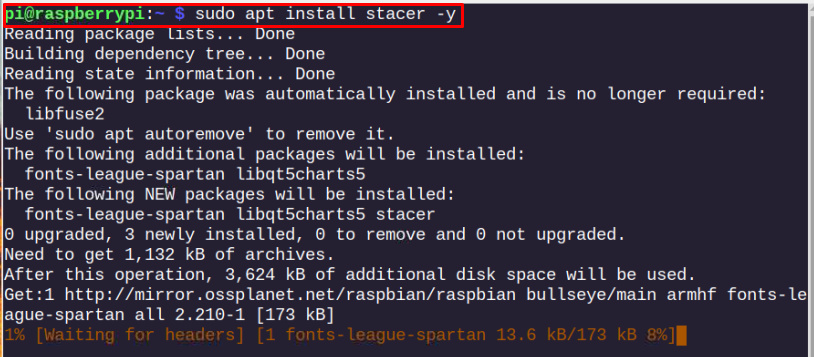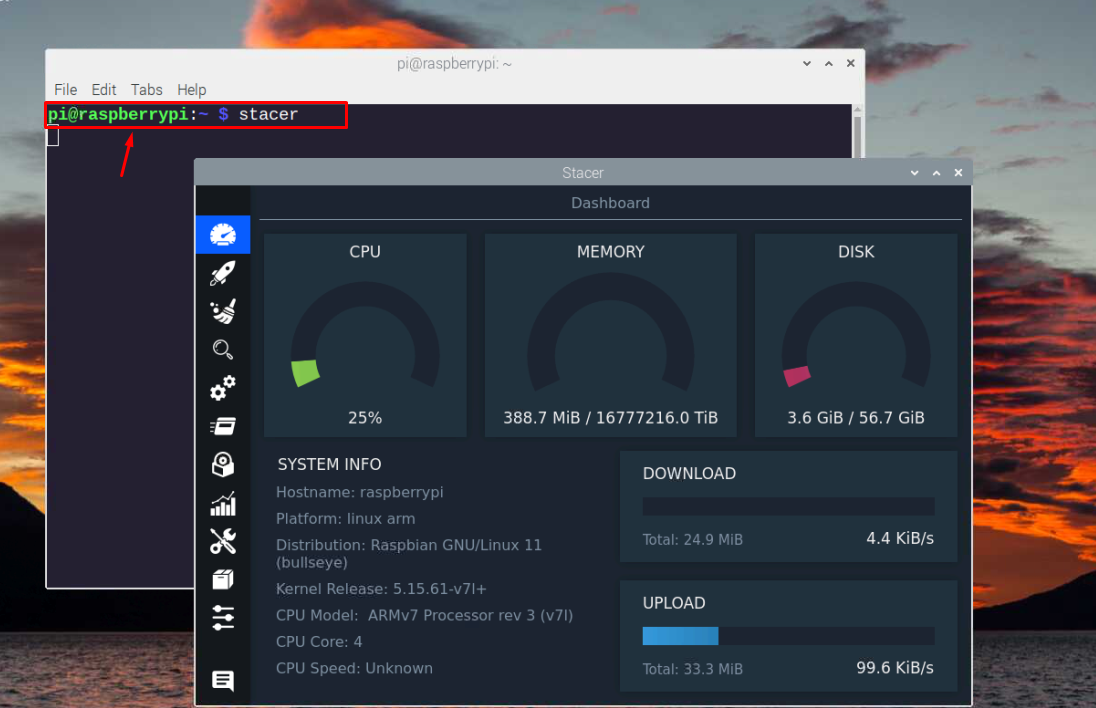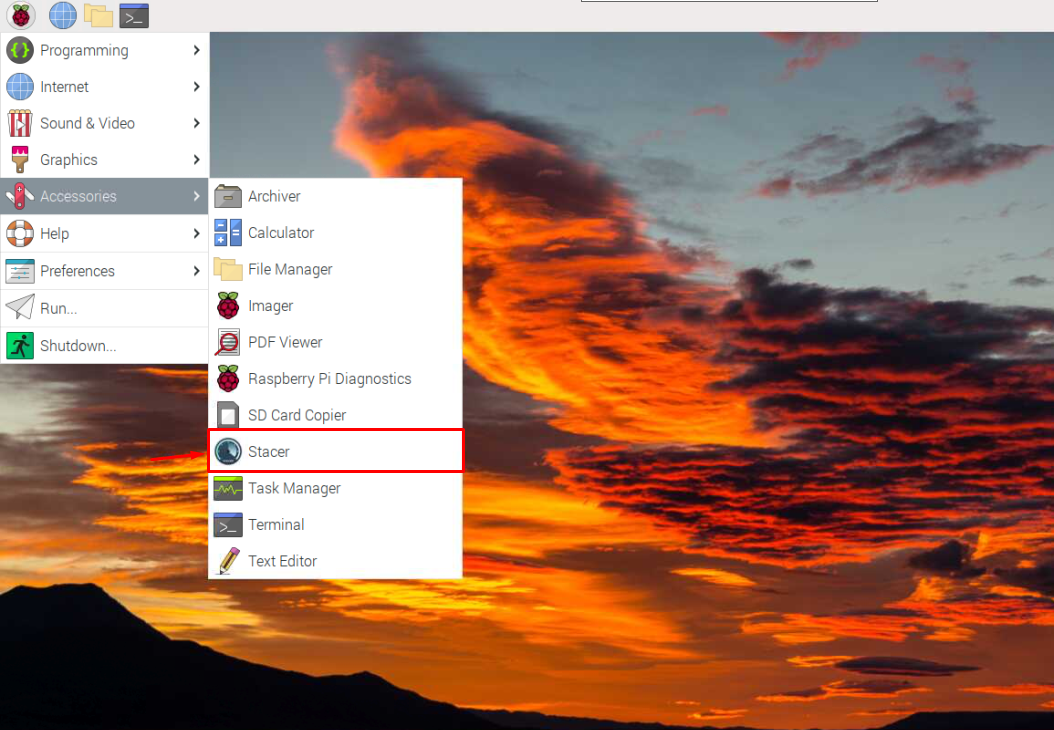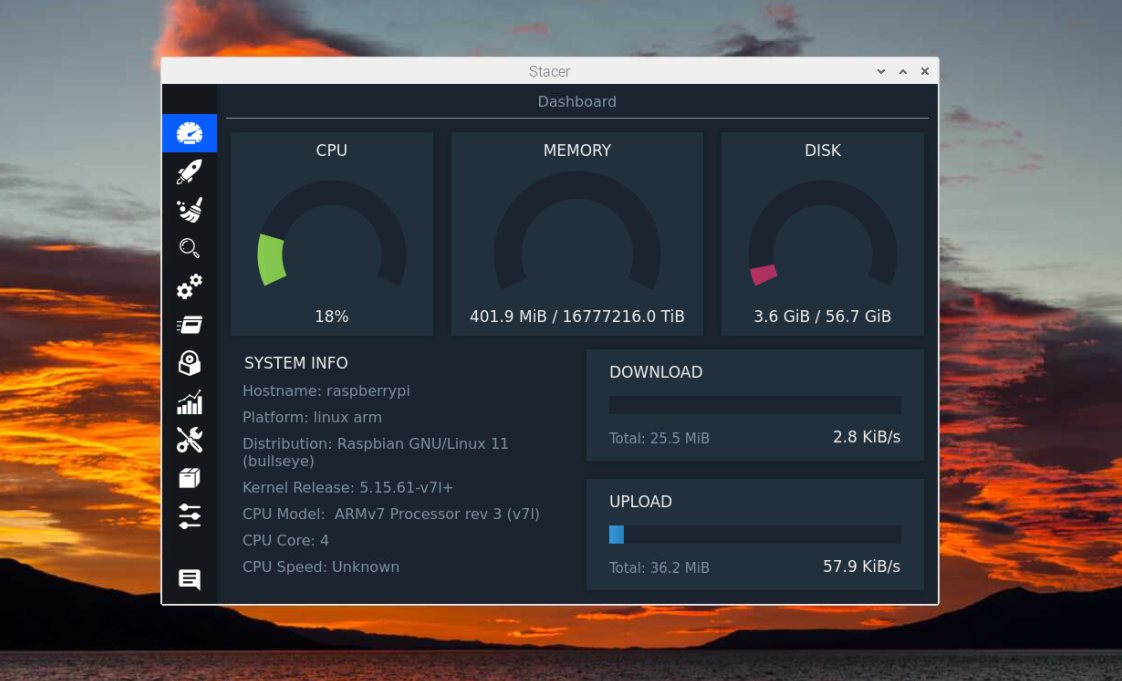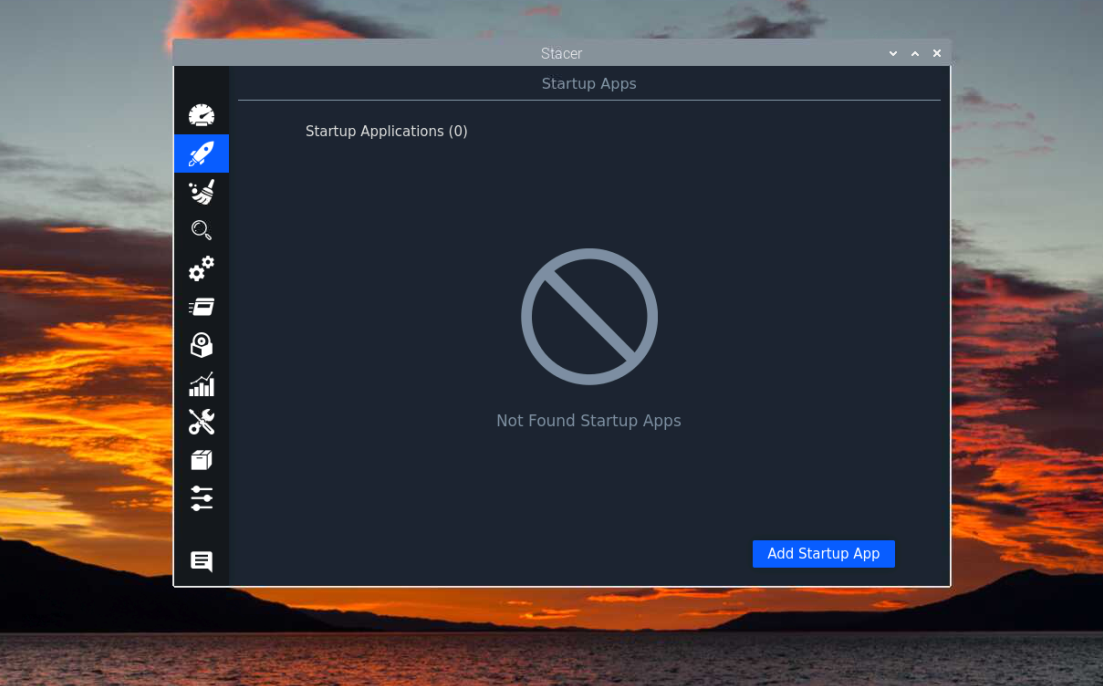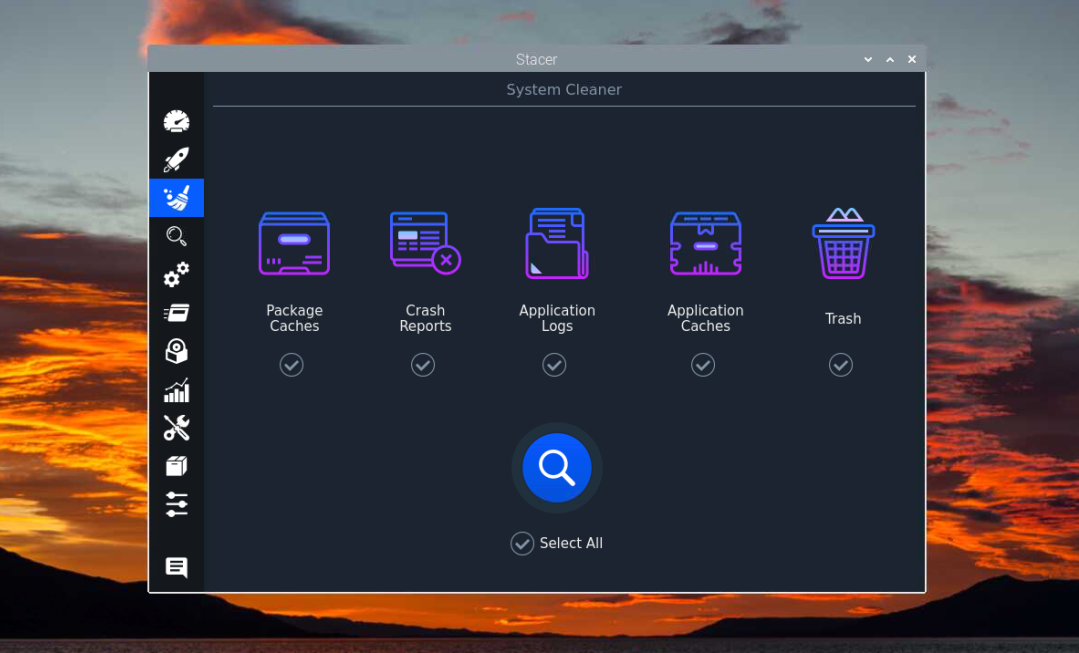In this article, you will learn how to install Stacer on Raspberry Pi through a simple method.
How to Install Stacer on Raspberry Pi
The Stacer repository is already included in the official Raspberry Pi source list, making it simple for users to install this application on their systems directly. However, before entering the installation process, you must run the following command to check for package updates.

The above command ensures that the packages in the Raspberry Pi source lists are updated and if it’s not, you should execute the below-mentioned command to update them.
After updating the packages, you can run the below-mentioned command to install Stacer from the Raspberry Pi source list.
Run Stacer on Raspberry Pi
There are two ways to run Stacer on Raspberry Pi. The first way is through the command line using the “stacer” command in the terminal to run the Stacer on the Raspberry Pi desktop.
The second way is to run the Stacer from the “Accessories” option in the Raspberry Pi main menu as shown below:
At the Stacer Dashboard, you will see the Raspberry Pi system information like CPU, memory, cores, hostname and more.
If you want to run applications at the startup, you can choose the “Startup Apps” option and add applications to start automatically when your system reboots.
To optimize the performance of your Raspberry Pi system, you can go into the “System Cleaner” section and apply the cleaning process to optimize the system performance.
This way, you can perform other tasks like stopping the services or processes running on the Raspberry Pi system or finding the CPU resource information on the Stacer dashboard. Now, the Stacer is successfully installed on your Raspberry Pi system.
Conclusion
Stacer is a handy tool for optimizing the performance of your Raspberry Pi system, as it removes unused resources or services from the system. You can install this application on your Raspberry Pi directly through the official Raspberry Pi source list without installing any additional packages. Later, you can run the application through the terminal or launch it from the Raspberry Pi main menu in the “Accessories” option.


